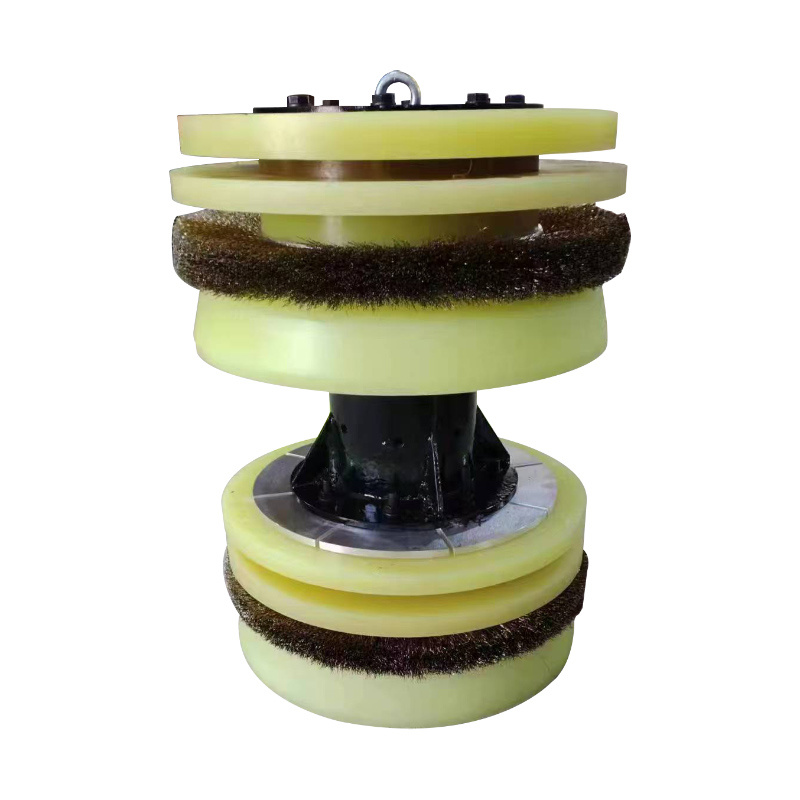The Essential Guide to High-Pressure Pipe Pluggers in Construction
Mar 31,2025
High-pressure pipe pluggers are crucial tools in the realm of construction and plumbing, particularly within the pipeline systems sector. These specialized devices are designed to effectively seal off pipelines to prevent leaks, manage pressures, and facilitate maintenance operations. Understanding their functionality and applications is essential for professionals working with pipe systems, ensur

High-pressure pipe pluggers are crucial tools in the realm of construction and plumbing, particularly within the pipeline systems sector. These specialized devices are designed to effectively seal off pipelines to prevent leaks, manage pressures, and facilitate maintenance operations. Understanding their functionality and applications is essential for professionals working with pipe systems, ensuring safety, efficiency, and reliability in various projects.
The main function of a high-pressure pipe plugger is to create a tight seal within a pipe, allowing for temporary closure while maintenance or repairs are conducted downstream. This is especially important in high-pressure systems where leaks can lead to significant safety hazards and costly operational downtimes. High-pressure pipe pluggers are engineered to withstand substantial force, typically rated for pressures well above those found in standard plumbing situations. This ensures that they can hold up under the demanding conditions often encountered in commercial and industrial environments.
In addition to sealing, high-pressure pipe pluggers play a vital role in testing the integrity of pipelines. They can be used to isolate sections of pipe for examination without disrupting the entire system. This capability is indispensable for identifying potential weak points or corrosion within the pipeline, enabling timely intervention before a failure occurs.
When selecting a high-pressure pipe plugger, it is essential to consider several factors, including the type of material used in the construction of the plugger, its size, and the specific pressure ratings. Durability is a key feature, as these tools must perform reliably under extreme conditions. Additionally, the ease of installation and removal is vital for minimizing downtime during service operations.
Professional users should also be aware of best practices to maximize the effectiveness of high-pressure pipe pluggers. Proper maintenance of the plugger itself—such as regular inspections and cleaning—can enhance its lifespan and performance. Furthermore, careful training on installation techniques can prevent accidents and ensure that the plugger is utilized correctly.
In summary, high-pressure pipe pluggers are indispensable in the construction and plumbing industries, providing crucial support for maintaining and managing pipeline systems. Their ability to seal and isolate sections of pipe not only enhances safety but also optimizes operational efficiency. By understanding their applications and adhering to best practices, professionals can significantly improve their project's outcomes while minimizing risks associated with high-pressure systems. Ultimately, investing knowledge in high-pressure pipe pluggers can lead to safer, more effective pipeline management and maintenance strategies.
The main function of a high-pressure pipe plugger is to create a tight seal within a pipe, allowing for temporary closure while maintenance or repairs are conducted downstream. This is especially important in high-pressure systems where leaks can lead to significant safety hazards and costly operational downtimes. High-pressure pipe pluggers are engineered to withstand substantial force, typically rated for pressures well above those found in standard plumbing situations. This ensures that they can hold up under the demanding conditions often encountered in commercial and industrial environments.
In addition to sealing, high-pressure pipe pluggers play a vital role in testing the integrity of pipelines. They can be used to isolate sections of pipe for examination without disrupting the entire system. This capability is indispensable for identifying potential weak points or corrosion within the pipeline, enabling timely intervention before a failure occurs.
When selecting a high-pressure pipe plugger, it is essential to consider several factors, including the type of material used in the construction of the plugger, its size, and the specific pressure ratings. Durability is a key feature, as these tools must perform reliably under extreme conditions. Additionally, the ease of installation and removal is vital for minimizing downtime during service operations.
Professional users should also be aware of best practices to maximize the effectiveness of high-pressure pipe pluggers. Proper maintenance of the plugger itself—such as regular inspections and cleaning—can enhance its lifespan and performance. Furthermore, careful training on installation techniques can prevent accidents and ensure that the plugger is utilized correctly.
In summary, high-pressure pipe pluggers are indispensable in the construction and plumbing industries, providing crucial support for maintaining and managing pipeline systems. Their ability to seal and isolate sections of pipe not only enhances safety but also optimizes operational efficiency. By understanding their applications and adhering to best practices, professionals can significantly improve their project's outcomes while minimizing risks associated with high-pressure systems. Ultimately, investing knowledge in high-pressure pipe pluggers can lead to safer, more effective pipeline management and maintenance strategies.









